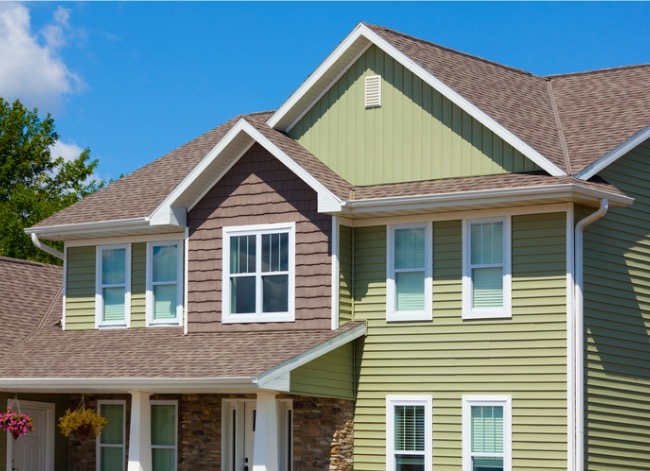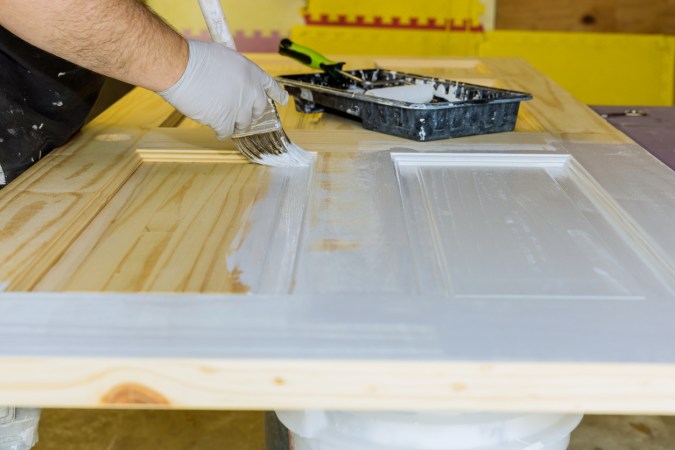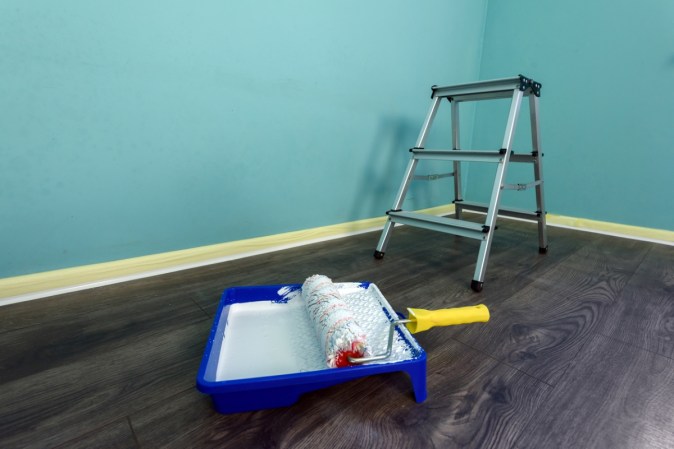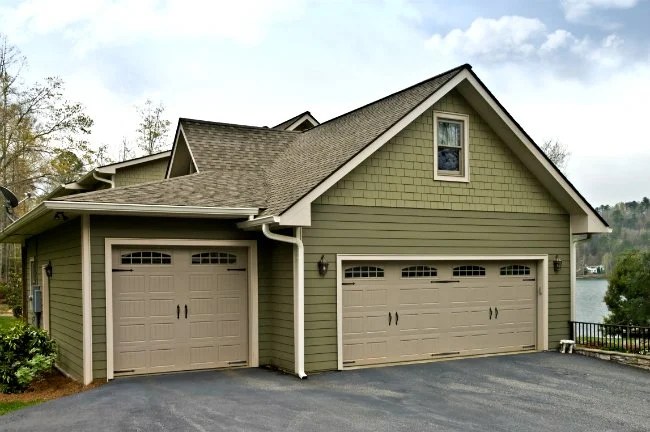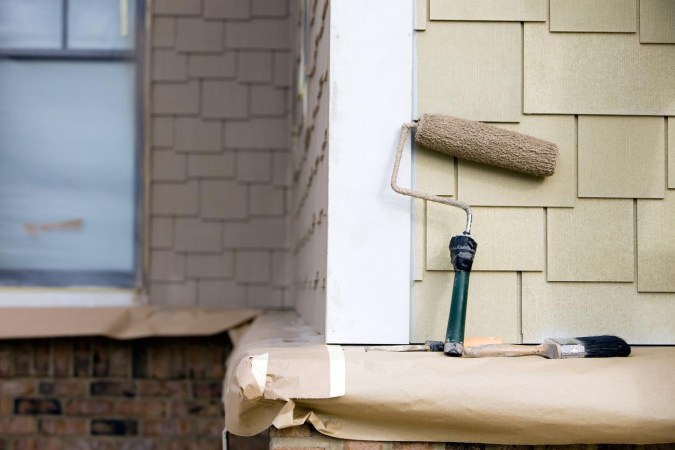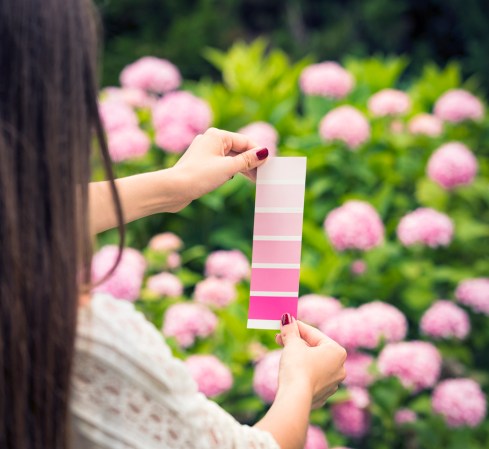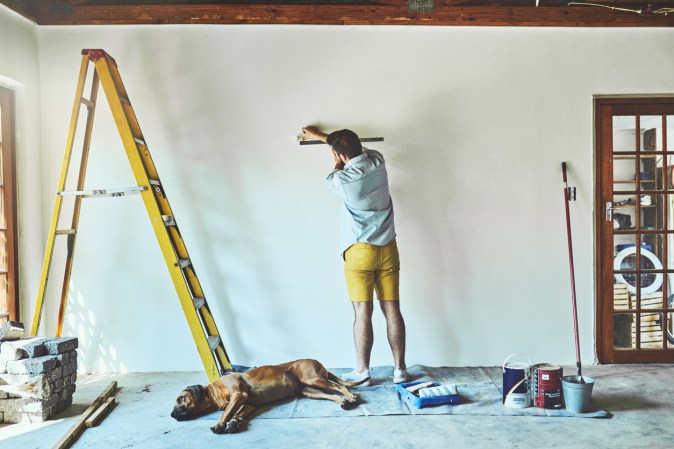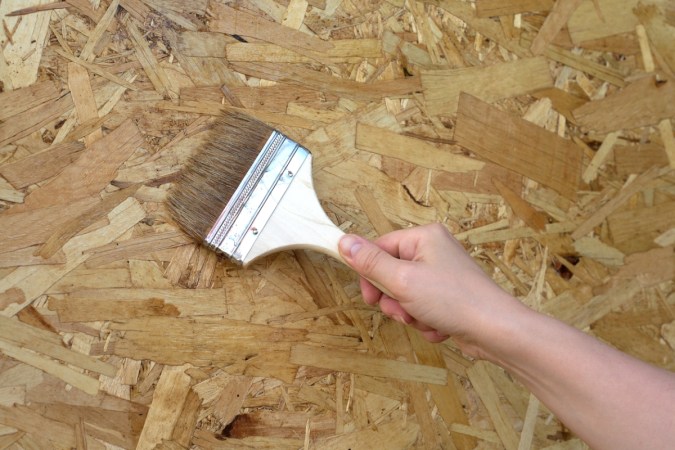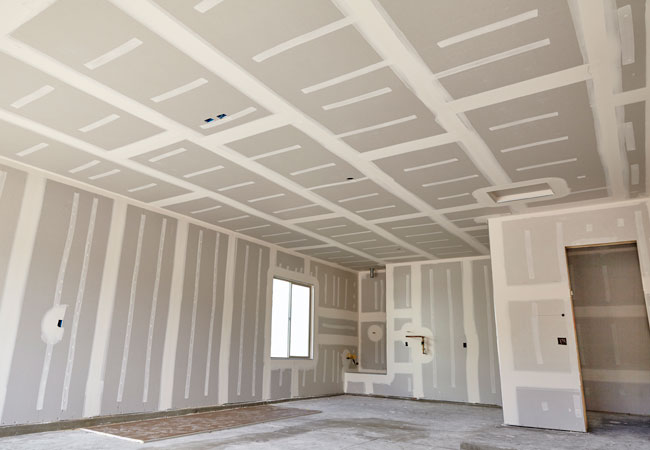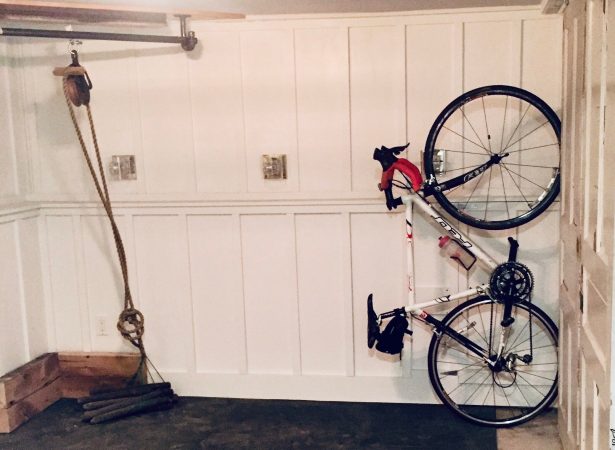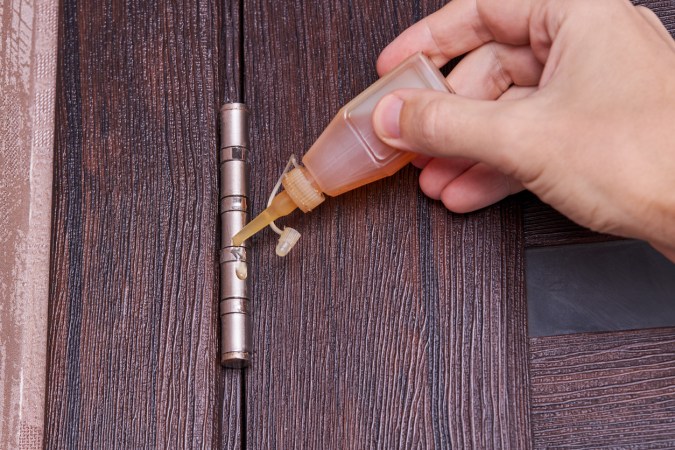We may earn revenue from the products available on this page and participate in affiliate programs. Learn More ›
A sensible siding solution, vinyl remains a popular and budget-friendly choice for home exteriors. Many homeowners have chosen vinyl for its low maintenance requirements, and the material has only gotten easier to maintain and longer lasting, benefiting over the years from advancements in manufacturing. Even so, it’s not—and will never likely be—invincible. If your siding is looking faded or worn, or if you’ve just grown tired of the color, you might be wondering: “Can vinyl siding be painted?” The answer is: Yes, vinyl siding can indeed be painted!
On homes in which siding covers most of the exterior, painting vinyl siding can be a large project. However, the good news is that it’s not a particularly complicated task. You may fear that in order to paint vinyl successfully, you will need to learn a new set of idiosyncratic, vinyl-only techniques. Fortunately, that’s not the case. If you’ve painted anything else before, most of the following steps for how to paint vinyl siding will probably be familiar. Plus, we’ll detail the handful of vinyl-specific considerations that you’ll need to keep in mind to get the job done right.
Tools & Materials
Bobvila.com may earn a commission from purchases made through these links.
- Laundry detergent
- Powdered household cleaner
- Bleach
- 1 gallon water
- Soft-bristled brush or cloth
- Garden hose
- Drop cloth
- Ladder
- Primer
- Paint
- Paint roller or paint sprayer
- Paintbrush
- Paint tray
STEP 1: Choose an appropriate vinyl siding paint color (the paint has to have certain properties, too).
For some, the first step may be the most difficult. There are so many colors that it can be difficult to know where to start. Fortunately, there are a few ways to narrow down the options and feel confident about the exterior house paint color you choose.
Basing color choice on the home’s style can help. Many paint makers offer historically accurate collections of colors for specific house styles. For example, Sherwin-Williams offers exterior color palettes for Queen Anne, Craftsman, Georgian, Suburban Modern, and other styles of homes.
Another way to choose an exterior siding color is to consider the home’s other exterior features. Look for colors that go with the roof color, and any brick or stone that is part of the facade. In order to help envision a new color on your home, search for inspiration images of homes that have the same fixed feature colors.
Climate and neighborhood restrictions may also help narrow the choices. While the roof has a larger impact on heat gain in a home, the color of the walls can also make an impact. Cooler colors lead to less heat gain. Plus, many communities have regulations dictating and limiting paint colors, and some homeowners may need to gain approval from the homeowners association before painting a house.
Finally, keep in mind that it’s easiest and most cost-effective for the homeowner if the new exterior paint color they choose is the same color or a lighter hue than the current color. This is because darker colors retain more heat, can leave the siding vulnerable to premature warping, and may also create other maintenance problems.
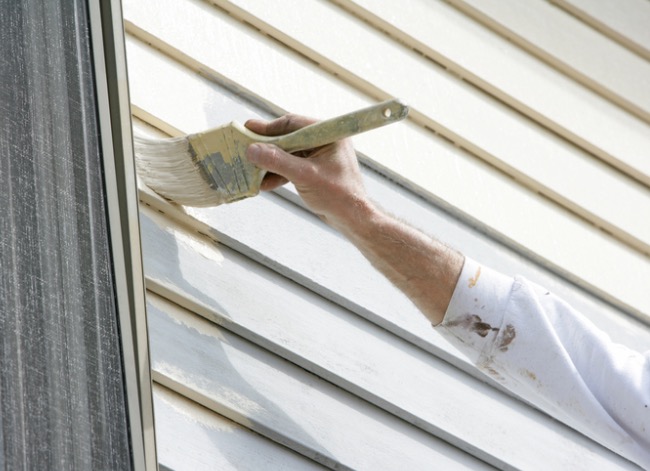
STEP 2: Make sure the vinyl siding paint you choose contains the right ingredients.
Although it can be tempting, don’t try to save time and money by purchasing the least expensive and most easy-to-reach can of paint. For a paint job to look good and last on vinyl siding, the product needs to have a few specific qualities.
Paint for vinyl siding contains acrylic and urethane resins. These ingredients accommodate the expansion and contraction of vinyl and help the coating stick. Vinyl siding paint requires a latex urethane paint formulated for exterior use.
STEP 3: Check the weather forecast for painting day.
Before heading outdoors to start painting your vinyl siding, first consult the weather forecast for your area. The ideal weather condition for exterior painting is a mild temperature, low relative humidity, and an overcast sky.
If the weather is too hot, too sunny, or even too windy, the paint may fail to go on properly. While it might look fine in the short term, paint applied on a hot, humid, or gusty day may adhere poorly as it cures and be more prone to cracking and flaking over time. Also make sure the weather forecast predicts clear skies for at least one day after the paint job is complete.
STEP 4: Prepare the vinyl surface.
A thorough cleaning is a critical step toward achieving a professional-quality paint job—not only on vinyl, but on any material that’s inside or outside. Simply rinsing the house’s siding with running water from a garden hose won’t cut it.
The goal is to remove all mold, mildew, chalky buildup, and debris from the surface. For best results, make a cleaning solution that contains the following ingredients.
- 1/3 cup laundry detergent
- 2/3 cup powdered household cleaner
- 1 quart liquid laundry bleach
- 1 gallon water
Use a cloth or a soft-bristled brush to apply the cleaning solution before painting vinyl siding, then be sure to rinse off any remaining residue. Before going any further, allow enough time for the siding to dry completely.
For specific tips about this process, check out our other article on how to clean vinyl siding.
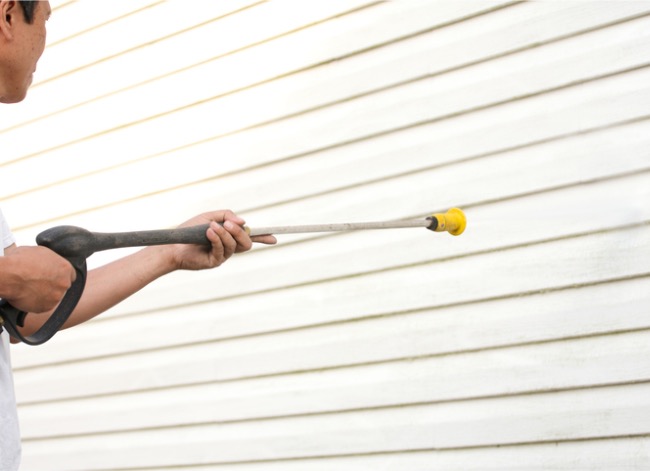
STEP 5: Set up paint supplies and apply primer, if necessary.
Before applying paint, set up a drop cloth to protect any plants or other surfaces from paint splatters. If needed, set up a ladder on a stable, flat surface and ask a helper to hold the ladder while you use it.
After the work area is set up and the supplies are gathered, it’s time to start painting. However, before applying the chosen color, primer may be needed. Primer is recommended to make sure the finished paint job is consistent and has good adhesion. It may not be necessary if the original color hasn’t completely or partially worn away. If the vinyl is pitted or porous, it will also benefit from primer.
STEP 6: Apply two coats of vinyl paint.
After the primer is dry, apply your chosen paint with a roller or a paint sprayer, saving brushwork for corners and edges. Evenly coat the entire surface, taking care not to apply too much paint in any one section. As for most other types of paint jobs, it’s better to do multiple light coats than one thick coat.
Upon finishing the first coat, let the paint dry before continuing on to the second coat. The second coat, however, must be given enough time (24 hours at least) to dry completely before the project can be considered complete.
Most of the time two coats are sufficient, but that doesn’t always do the trick. Once you have allowed the second coat of paint to dry completely, assess its appearance to determine whether an additional coat may be needed.
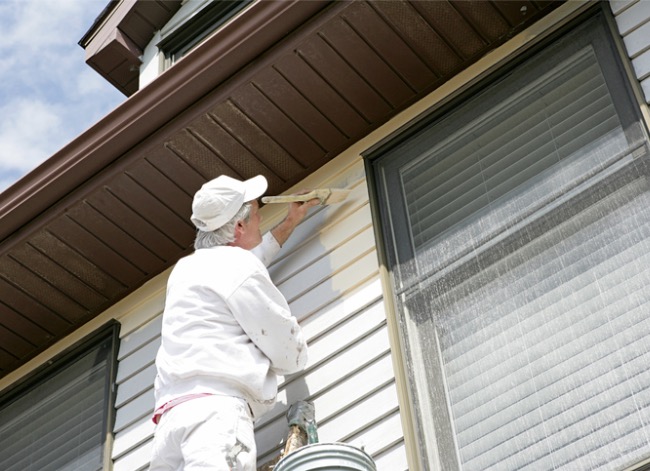
Final Thoughts
Painting a home’s exterior (and painting vinyl siding) is a laborious job. The silver lining to completing such a large-scale is this: Assuming that you properly cleaned the siding prior to painting and had ideal weather conditions during paint application, you can reasonably expect the new coat of paint to last 10 years or more.
Now that you know the answer to the question of can you paint vinyl siding, remember that it’s easier said than done. Depending on the size of a home and how much vinyl siding is covering the home, painting vinyl siding can take a day or it can take an entire weekend or more to properly clean, apply primer, and coat twice with the chosen paint color. Because jobs like this typically involve climbing on tall ladders, it’s also important to enlist a helper for safety reasons —and to make the job easier and faster.
FAQs About How to Paint Vinyl Siding
Freshly painted vinyl siding can transform the look of a home in about a weekend. It’s a laborious project, but the cost savings and satisfaction of a home makeover can be worth it. While we’ve shared the steps in painting vinyl siding, there may be some lingering questions. Below are answers to some of the most popular questions about how to paint vinyl siding.
Q. How long will my vinyl siding last if I paint it?
With regular maintenance and cleaning, vinyl siding can last from 20 to 40 years. Paint may need to be applied every 10 years or so, depending on local weather conditions.
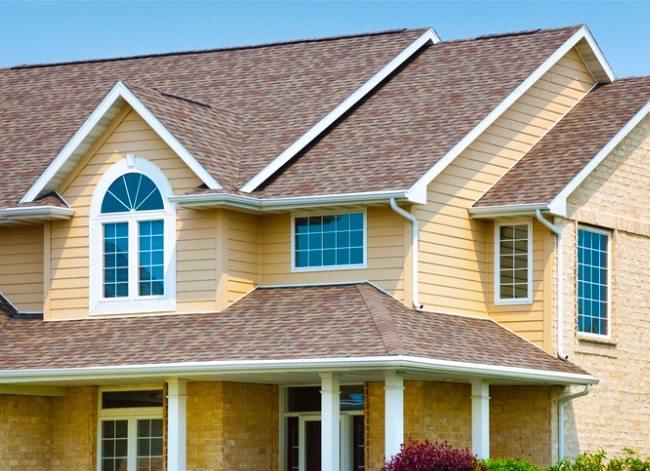
Q. How do you make vinyl siding look modern?
Paint colors can help make vinyl siding look more modern. Choosing rich neutrals over pastels can infuse a sided home with modernity. Also, pairing the siding with exterior elements like modern furniture on a porch, statement-making door decor, and carefully chosen landscaping also helps make the entire house facade feel more modern.
Q. How much does it cost to paint over vinyl siding?
On average, it can cost $4,000 to paint a 2,000-square-foot home, according to Fixr. Costs vary by location, number of coats, the age of the siding, and whether you paint it yourself or hire a professional painter.
Q. Is it bad to pressure-wash vinyl siding before painting?
Vinyl siding should be washed and dried prior to painting. If it’s dirty, paint will stick to the dirt and grime on the vinyl siding and be unable to adhere to the siding. When the dirt finally flakes off, it will leave behind blemishes in the cured paint.
Q. What siding colors for houses help get the best resale value?
The best colors for home resale include neutrals and traditional colors like off-white, yellow, light blue, gray, taupe, putty, and blue gray.

